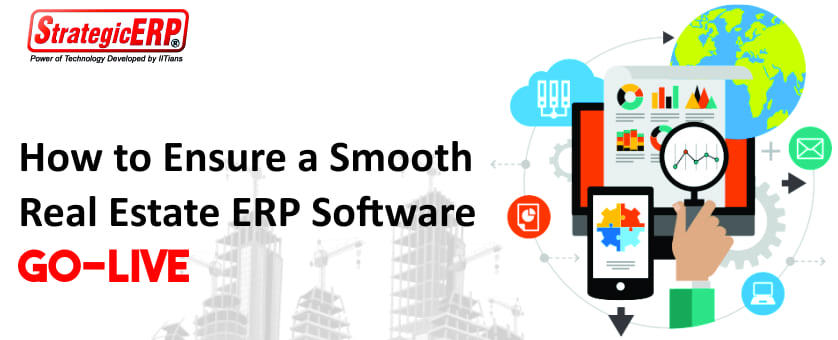How to Ensure a Smooth Real Estate ERP Software Go-Live
Category : ERP
Blog posted by : Admin / 14 Sep, 2018
When we look out for successful ERP use cases, there are examples galore of how real estate firms have benefitted with the system. From a complete view of their inventory to real-time business insights and enhanced interdepartmental collaboration, firms have seen immense benefits with real estate ERP software implementation. On the other hand, we have many instances of ERP disappointments, where the implementation did not come anywhere close to the buzz it was expected to create.
So, how can you make sure that you don’t fall in the latter category? The answer lies in just one critical factor: planning, planning and a lot of planning. Take a look at the below checklist you must include in your planning process to ensure a smooth go live:
Conduct Comprehensive Dry Runs: Before the actual go live of the real estate ERP solution, it is important that you carry out a complete testing to identify possible gaps and take appropriate measures to fix them. Make sure that all the teams take part in the testing activity so that they can familiarize themselves with the new platform and be prepared for the actual go-live. Observe several parameters during training, such as performance, ease of usage, integration and interoperability. Do check for any downtime in case of additional load.
Incorporate User Inputs Post Testing: Post dry run of the real estate ERP solution, talk to users, who should ideally be experts across departments, to understand the system’s responsiveness. For instance, an employee in the purchase department could point out something extremely different from someone in sales and marketing or finance. Take note of the feedback and fix the loopholes to avoid any boomerang in actual go-live. Make sure that the ERP for real estate meets the unique needs of each department, as well as overall business requirement of the company. More often than not, companies feel the need to tweak the user interface. This generally happens as when the processes are run standalone, all the components appear perfect. However, when they are run together as a part of the system, they require some rejigging, such as matching fields, to ensure seamless work flow. This step is thus an essential part of ensuring that you get the desired output from your implementation of ERP for real estate.
Don’t Ignore Training: One of the major keys to the success of a real estate ERP solution implementation is a powerfully trained team. After all, an ERP software is as effective as it users. Start focusing on training programs early into the project to avoid any glitches during the transition. Make sure that the training is job specific to address their unique requirements. For instance, training modules should be customized differently for developers, program managers and administrative personnel to help them clearly understand their process. They should have a complete clarity on how the real estate ERP system is different from its legacy counterpart and how it will streamline the workflow. Also, work closely with your ERP partner to address all queries or concerns to make sure the team is comfortable and well-versed to use the system when it goes live.
The seemingly smooth and easy looking implementation are all a result of lot of hard work and careful planning. This is where the role of ERP provider comes into the picture. Make sure that the real estate ERP provider you select has a powerful and tech-savvy team and a strong client portfolio. Armed with extensive industry experience and learning from other projects, the ERP provider can help you strategize better to derive the satisfactory RoI from your implementation.







